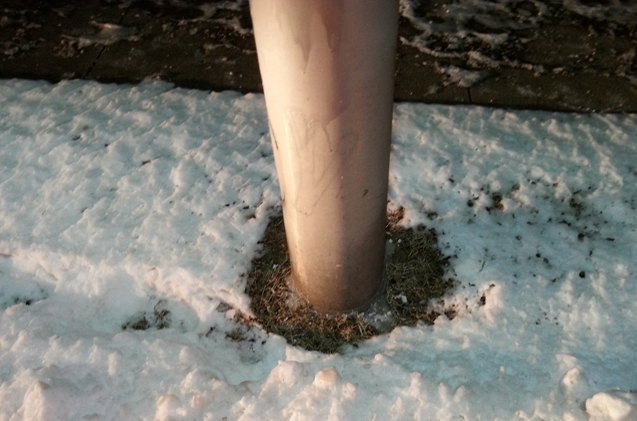Shocking News: How to Steer Clear of Contact Voltage on Winter Walks

Well this is just shocking! And certainly an education for someone like me who had for years been muttering under my breath about the damn city officials not taking better care of our in ground electrical panels that service area street lights and traffic signals. In our neck of the urban woods, dogs were getting zapped while out walking on city sidewalks with their owners. Some did not survive and the cause was being blamed on those in-ground electrical panels. Okay, maybe it was me blaming it on poor municipal infrastructure.
Related: Warning: The Deadly Dangers of Antifreeze Poisoning in Dogs
The truth is, it’s not a maintenance issue at all but a much more complex situation that isn’t going away and means pet parents that live in areas that experience wintry weather, need to be aware and ultra-diligent next time they pick up the leash and call for their pooch.
The “zap” is called “contact voltage” and it’s an electrical fault that puts voltage onto public accessible surfaces that should not have power on them – typically metal street lights, traffic signals and junction boxes. December, January and February and the top months for this type of electrocution to happen because road salts, de-icers and antifreeze liquids are chemicals that make snow and slush more conductive to the electricity. Rover walks into it and gets a nasty shock but because you and I would typically wear some type of rubberized or waterproof boot at that time of year, we don’t suffer the same fate.
Related: Utility Testing and Geographic Information Systems
So what’s the best way for you and your little guy to safely enjoy your winter walks? The cautious folks at Utility Testing and Geographic Information Systems offer some tips:
- Be aware of and avoid light-poles, traffic signals, junction boxes and other obvious electrical sources. While it’s not an absolute that contact voltage is present at each site, this is unquestionably where an unsuspecting walker would find it.
- Look for melted snow around the base of poles. Again, not a positive indication contact voltage is present, but it raises a warning flag. Electrical current flowing on the pole causes it to heat up slightly, melting the snow around the base.
- Talk with your fellow pet parents and neighborhood dog walkers. Collectively you may see a pattern to odd pet behaviors along your walking routes. Singularly, humans might not pick up on anything unusual, but if a group of people observe adverse behaviors at the same general location- that may warrant a more official investigation.
- Report all suspected contact voltages to 911. Contact voltages can range anywhere from 1 volt to over 120 volts – so strong enough to cause serious harm.
Mary Simpson is an animal-loving writer and communications professional. A soft touch for anything stray, she shares her century home with an eclectic collection of rescues that include orange tabby Chico, tuxedo Simon, and jet black Owen. She enjoys running, politics, exploring local wine regions and is an avid supporter of the “shop local” movement.

Sharing space with three seriously judgy Schnoodles and a feline who prefers to be left alone. #LivingMyBestLife
More by Mary Simpson
























